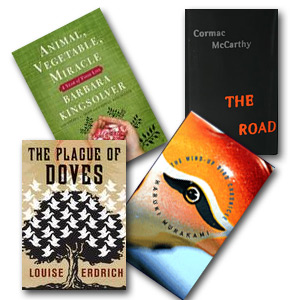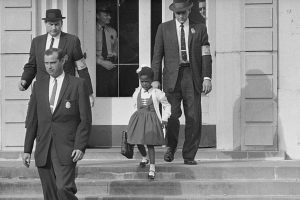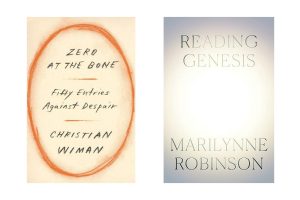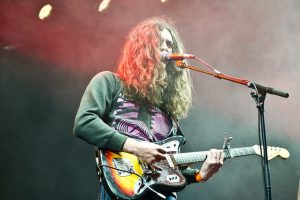Here are a few books U.S. Catholic editors think are worth adding to your reading list this month
 Animal, Vegetable, Miracle: A Year of Food Life
Animal, Vegetable, Miracle: A Year of Food Life
Barbara Kingsolver (HarperCollins, 2007)
A few days after finishing Barbara Kingsolver's Animal, Vegetable, Miracle: A Year of Food Life, I cut open a cantaloupe from the farmer's market and watched as the slimy innards fell all over my countertop. Instead of seeing a mess, I couldn't help but wonder at so many little seeds, each the beginning of cantaloupe life. The messiness of life is missing in packaged, pre-cut cantaloupe sold in grocery stores, I thought. Such a small observation as this is what makes up Kingsolver's larger story of becoming a "locavore."
Kingsolver describes the miracle she's discovered by committing to a local diet–grown mostly by her own family's efforts on a small Virginia farm–while writing about Thanksgiving: "Wake up now, look alive, for here is a day off work just to praise Creation: the turkey, the squash, and the corn, these things that ate and drank sunshine, grass, mud, and rain, and then in the shortening days laid down their lives for our welfare and onward resolve. There's a miracle for you, the absolute sacrifice that still holds back seeds: a germ of promise to do the whole thing again, another time."
In Animal, Vegetable, Miracle, the novelist schooled in biology preaches for a new appreciation of the food we eat and suggests that the only way we can get back to being truly thankful for our food is to know where it comes from-from local farmers or even our own gardens. Kingsolver advocates conserving what little is left of our regional food cultures, along with our family life, our values, and our environment.
Pundit Bernard Goldberg called her the 74th most dangerous person (i.e., liberal elitist) in America-a fact her neighbors joked about while she was elbow deep in harvesting the Thanksgiving turkey-but because of her appreciation for local agriculture Kingslover labels herself a "conservative."
Because contemporary American "food culture," focused on industrial farming and shipping food across the world, is so entrenched in our way of life, Kingsolver's proposal seems quite revolutionary. She spends a good deal of the book making convincing economic, social, and political arguments for the locavore movement. The real pleasure of the book, though, is her appeal to the readers' heart and tastes buds. Animal, Vegetable, Miracle is not a screed, but a story. Kingsolver says: "The heirloom turkeys are not just large birds but symbols of a precarious hold on a vanishing honesty. The chickens are secondary protagonists, the tomatoes are allegorical. The zucchini may just be zucchini."
Kingsolver doesn't make me feel overly guilty about my city-girl ways and is reasonably flexible with herself as well, but she does make me nostalgic for my grandpa's garden. And she makes canning and cheese-making sound fun (not weeding though). I dream that someday I could raise a family on the fruits and vegetables of our own labor like she does, but for now, I will favor the farmers market over the grocery store and cultivate a mindset that doesn't take cantaloupe seeds for granted. – Megan Sweas, Associate Editor
Haruki Murakami (Vintage, 1997)
The Wind-up Bird Chronicles isn't exactly a book I would have chosen on my own-book clubs are good for expanding our reading horizons-and after poring through some 600 pages of this English translation of Murakami's Japanese (it's even longer in the original), I'm still not sure I can recommend it to everyone. But if you enjoy a surreal blend of historical fiction and supernaturalism, The Wind-up Bird might be for you.
Murakami's story focuses on the conflict between out-of-work law firm gofer Toru Okada and his sinister brother-in-law, Noboru Wataya, a telegenic politician whose star it rising. Their battle revolves around Toru's wife and Noboru's sister, Kumiko, who disappears mysteriously.
Toru's meandering search for his wife guides the plot, but his interactions with a host of other characters both drive the drama and make it hard to follow. From Creta Kano, a psychic with a signature fire-engine-red hat, and her sister Malta, a self-described "prostitute of the mind" who was raped by Noboru, to the mysterious healer Nutmeg and her silent son Cinnamon, to Lieutenant Mamiya, a veteran of Japan's World War II campaign in China and witness to its atrocities, it can be a little hard to keep all the threads of Murakami's story together. As many reviewers have pointed out, the author never really manages to tie them together.
That said, Wind-up Bird is an engaging read, even if it leaves so many questions unanswered. Rather than being a story with a beginning, middle, and end, Wind-up Bird starts and ends basically in the middle. In that sense it is not terribly unlike our lives, whose meanings, crucial moments, and lessons aren't often clear until we near their end. – Bryan Cones, Managing Editor
Cormac McCarthy (Vintage International, 2006)
When I read Cormac McCarthy's The Road a few months back, its post-Apocalyptic story line seemed anachronistic, though still harrowing, and, for this father, profoundly moving. A father and son traverse a wretched and devastated landscape, crossing a dust-shrouded desert of smoldering cities and scorched countryside, on the run from cannibals, starvation, and humankind's final stupidity-somehow keeping alive their nearly obliterated humanity, a small flame of hope on a ruined planet.
The Road is the kind of novel that would have been culturally at home during the "duck and cover" days of mutually assured destruction-worried then by Fail Safe and On the Beach-or more obviously relevant in The Day After's Reagan era when "morning in America" meant a renewed arms race and the revival of parental nuclear night tremors. But early on in this new century, with the Soviet Union a fading memory and no MADish endtimes to trouble our sleep, what could McCarthy have been thinking when he composed this desolate masterpiece?
Then a little country called Georgia found its way into our headlines and odd place names like Tbilisi and Gori reminded of other once unheard of places like Sarajevo, where small desperate acts led to the devastation of world war. Suddenly the world did not seem as safe as before and the future not as certain. Could we really end up fighting the Russians over Georgia-Georgia!?-I found myself muttering over the morning news, looking over its pages at the small children around my table.
We have been sleeping, McCarthy says, drowsing in complacency. The veneer of civilization remains just as thin as it has always been, the promise of progress the same flim-flam, the impulsiveness and arrogance of humankind the same volatile, cruel mix. How would my little troop survive after the end of history? Could I show the fortitude and love of McCarthy's father, protecting and preparing his small boy for a future he knew he would never see and could barely trust? This unforgiving Road is a tough journey for any reader, but McCarthy's restrained and fearless prose has never been better and his small warning never more relevant. – Kevin Clarke, Senior Editor
Louise Erdrich (HarperCollins, 2008)
A cornerstone of recent Hispanic theology has been the concept of mestizaje, the fusion of American Indian and European races and cultures, which is seen as a grace that holds great promise for today's increasingly global and cross-cultural world. Over the past quarter century, Louise Erdrich's fiction has explored a particular incarnation of mestizaje, the michif (or métis) mixed-blood world of the Ojibwe, French, and Germans in North Dakota. A self-described "emissary of the between-world, that increasingly common margin where cultures mix and collide," Erdrich has just added a new masterful novel to this compelling series: The Plague of Doves.
As in many of her other books (most notably in The Last Report on the Miracles at Little No Horse and in Tracks), part of that exploration delves into the co-existence and at times conflict between Catholicism and the traditional Ojibwe religion, a struggle of spiritualities that has been a part of Erdrich and her family's own life journeys. Throughout the book-beginning with the first sentence, which introduces the narrator's great-uncle as one of the first Catholic priests of aboriginal blood-that theme re-emerges in varying contexts. It provides an intriguing historical background in the story of the 19th-century Catholic Canadian métis leader Louis Riel (whose picture hangs on the wall in Evelina's house next to John F. Kennedy and Pope John XXIII). And it is also at the center of some of the book's funniest scenes involving a big, pompous new priest, Father Cassidy, who ends up driving old Mooshum "back to the blanket" and the "old ways."
The Plague of Doves is built around an actual historical event, the unsolved 1911 killing of a white farm family and the subsequent revenge lynching of two innocent Ojibwe men and one boy. The stories are told from different narrators' perspectives and span and intertwine several generations of local families, descendants of both the victims and the perpetrators of the lynching. The connections between the initially disparate stories gradually emerge and create a rich tableau of life on and off the reservation and in the small and dying town of Pluto, North Dakota. They are stories of a crime and its consequences, of sin and redemption, love and pain, joy and grief, humor and tragedy, hope and forgiveness, heroism and betrayal, and of passion and mystery. – Meinrad Scherer-Emunds, Chief Publications Officer




 The Wind-up Bird Chronicles
The Wind-up Bird Chronicles The Road
The Road The Plague of Doves
The Plague of Doves









Add comment